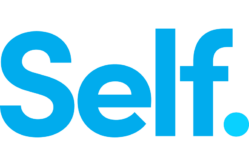A Home Equity Line of Credit (HELOC) is a flexible line of credit against the value of your home. You use your home’s equity as collateral against the loan. Usually, the borrower agrees to a certain maximum amount they can borrow over a specified time period. In some ways, it is similar to a credit card because the borrower has a credit limit, and can take out the money as needed as long as they don’t exceed the amount of the HELOC.
Table of Contents
- What is a HELOC, and Why Get One?
- Why a HELOC Does Not Equal Liquidity
- What Does Liquidity Mean?
- HELOC Point #1: You’re paying extra on that debt.
- HELOC Point #2: It might not be there when you need it.
- HELOC Point #3: Easy come, easy go.
- Why Emergency Savings Still Matter
- Does this mean that having a HELOC is a bad thing?
- What to Look Out for When Applying for a HELOC
What is a HELOC, and Why Get One?
A HELOC is a great way to have an available line of credit whenever you need a large amount of money. The HELOC loan rates are often better than credit cards and other unsecured lines of credit because the debt is secured by your home equity (translation – if you don’t pay it back, your home could be on the line). Credit cards are unsecured loans and generally have higher interest rates.
Many people use HELOCs to pay for home improvements, debt consolidation, or as a ready source of cash for an emergency fund. However, I don’t recommend using a HELOC as an emergency fund unless it is absolutely necessary. It’s best to have an actual cash emergency fund.
In many states, the interest payments for a HELOC are tax deductible (up to $100,000). This lowers the effective interest rate you pay on the loan. AMT rules or other laws may interfere with your ability to claim this deduction; do your research before borrowing with the assumption you can deduct interest payments.
Why a HELOC Does Not Equal Liquidity
A home equity line of credit can be helpful if you have major unexpected expenses or need to smooth out your cash flow for a short period of time. But having a HELOC should not be confused with liquidity. In other words, you shouldn’t use a HELOC to fund your daily living expenses.
Most financial planners and counselors advise their clients to maintain emergency savings of somewhere between 3 & 6 months’ living expenses. As previously discussed, saving 3-6 months’ expenses sounds so daunting that many people don’t know where to begin. When you throw in paltry returns on savings accounts, some folks might not even try. In fact, why bother when you can use a HELOC & tap into your home equity? After all, it’s pretty easy to tap into, and you can put your money to work in other ways, right?
Before starting, you might think about liquidity and how to use it in emergencies. You should also understand why having emergency savings still matters. While having access to a HELOC isn’t necessarily a bad idea, it’s important to understand that having one can be detrimental if you don’t use it properly. First, let’s discuss what liquidity is.
What Does Liquidity Mean?
According to Investopedia, liquidity describes the degree to which an asset or security can be quickly bought or sold in the marketplace without affecting the asset’s price. The implication is that we’re discussing an asset that can be quickly sold to meet an emergent financial need. If you keep your emergency savings fund in a checking account, you don’t need to sell anything. That’s as liquid as it gets.
On the other end, being house-rich and cash-poor means that most (or all) of your wealth is tied up in your house’s equity. Since you cannot quickly sell a house, most people do not consider a house to be a liquid asset.
Conversely, a HELOC is nothing more than having access to extra debt associated with your home’s equity. Using a HELOC to meet that emergent financial need might be prudent. However, it’s important to distinguish between responsible use of debt and believing that the debt itself is an asset. Moreover, there are several things you should think about when it comes to home equity loans.
HELOC Point #1: You’re paying extra on that debt.
When you obtain a HELOC, you’ll most likely pay an origination charge. It might be a nominal amount, like $50 for a $10,000 line of credit. In terms of percentages, that’s still .5% for that first year…even if you don’t use it.
Also, you’ll pay a higher rate than your primary mortgage. That’s because your HELOC is a secondary debt to your primary mortgage. In other words, if your home goes into foreclosure, your primary lender is first in line to be reimbursed. Your HELOC lender will be repaid only after the primary loan is paid off. They charge extra for that additional risk.
In addition, HELOCs are usually tied to the prime interest rate. In other words, as interest rates rise, so does your HELOC rate. This is important to keep in mind…you cannot assume that you’re paying today’s interest rates for tomorrow’s emergency. If you’re the type of person who likes to run the numbers, you might find that this change alone could throw you off. Big time.
HELOC Point #2: It might not be there when you need it.
HELOCs are tied to…home equity. This may sound intuitive, but it’s an important consideration when you’re planning for the future. Although home values generally increase over time, they don’t do so in a straight line. When prices take a hit, that hit directly impacts home equity.
Let’s take an example of a hypothetical couple, Pat & Morgan. Their numbers, directly from a Bankrate article, are below:
Pat and Morgan bought a house in September 2009 for $172,000. They made a 20% down payment and refinanced it 3 years later. In July 2014, they applied for a home equity line of credit.
Here’s how the bank calculates how much they can borrow:
| Home’s current appraised value | $190,000 |
|---|---|
| 80% of appraised value | $152,000 ($190,000 x 0.8) |
| Amount Pat and Morgan owe on mortgage | $128,633 |
| 80% of home’s value minus amount owed | $23,367 |
The bank will give them a credit line of $23,367 or less.
What would happen if home prices went down 10%?
| Home’s current appraised value | $171,000 ($190,000 x 0.9) |
|---|---|
| 80% of appraised value | $136,800 ($171,000 x 0.8) |
| Amount Pat and Morgan owe on mortgage | $128,633 |
| 80% of home’s value minus amount owed | $8,167 |
That 10% dip in home prices erased $15,200 in borrowing power! Note: The HELOC decrease isn’t the same as the decrease in home value because you’re only borrowing against 80% of it ($19,000 x 0.8 = $15,200).
HELOC Point #3: Easy come, easy go.
Doesn’t it seem that if you work really hard and save up for a big purchase, then you appreciate it that much more? Conversely, if you don’t have to work as hard, then you don’t value it as much.
Imagine saving $500 monthly for 60 months to reach a $30,000 savings goal. You’re probably going to take good care of the money accumulated over 5 years. At least, you’ll likely be pretty conservative in terms of what defines an emergency. And the good habits that you formed while reaching your savings goal will keep you on the right track.
On the other hand, imagine signing some paperwork; a month later, you’ve got access to that same $30,000. Now, ‘emergencies’ pop up a lot more. Paying off the credit cards becomes something you’ll want to do as a matter of interest-rate arbitrage. If you don’t have a fixed budget, you pay ‘what you can’ each month. Doing this might not ever get you to pay off your debt. If you don’t take the time to learn where your money goes, a HELOC will probably not help you in the long run.
Why Emergency Savings Still Matter
You can summarize this statement with one point: Triple whammy.As discussed in my previous liquidity article, a triple whammy is when three external factors hit you in a relatively short period of time. This can be any three things that involve your money: family death or injury, accident, losing a job, long-term illness, etc. You may not worry about losing your income if you have a secure job. However, an unexpected job loss can cause financial difficulties… that’s two parts to a triple whammy. All you need is an accident or unplanned emergency to throw you off track. That’s where the difference between having savings and a HELOC really matters.
Let’s imagine you’re transitioning and trying to find a job. While you’re searching, you end up in a car accident and have to replace your car. You’re now in a triple whammy. Let’s assume that six months later, your situation stabilized. You spent $30,000 on relocation costs, living costs, and to buy a new car (insurance proceeds helped). However, your income from your new job is helping your financial situation, and things are generally trending up.
If you had a $30,000 savings account and zero HELOC: Your account is now zero. However, you’ve got a stable job, and you’ve done this before. You’ve got the confidence that with some fiscal discipline, you’ll be able to rebuild your emergency savings even faster than before (5 years at $500 per month).
If you had a $30,000 HELOC and zero savings: Your account is now zero. However, while you’ve got a stable job that’s paying more than before, you’re not sure where to begin. Is $30,000 in debt a ‘new normal?’ If so, at 4%, you’re paying $100 per month just to keep your balance from going up. Even if you wanted to pay it down, that $500 per month will get you back to zero in 67 months. That’s assuming a lot, including:
- No annual charges
- No rise in interest rates
Using Bankrate’s calculator, if this HELOC had a nominal $50 annual fee and there was a .5% annual increase in interest rates, you’d still have a $4,099 balance. You wouldn’t pay off the HELOC until month 70, almost a year later. During this time, you’d have paid $3,921 in interest.
More importantly, unless you’re able to get your arms around your savings habits, you might not have the fiscal discipline to keep on this track.
Does this mean that having a HELOC is a bad thing?
Not at all. Used responsibly, a HELOC can be a very powerful tool. Having access to a HELOC while maintaining a zero balance can be a positive factor in your credit score calculation. HELOC interest is (usually) tax-deductible, which can lower your after-tax interest rate. This could be a factor in financing a large purchase, such as a car. Most importantly, it can serve as an additional cushion against unexpected emergency situations. However, since a HELOC isn’t an asset, you should not see it as a primary form of ‘liquidity.’
What to Look Out for When Applying for a HELOC
As mentioned above, the interest rate on a home equity line of credit is usually variable and based on an index such as the prime rate plus a margin (the prime rate is the rate at which banks can borrow money). This means your interest rates can, and likely will, change. If your loan has a long amortization schedule, be prepared to have your payments change several times over the course of your loan.
Many banks charge an annual fee on a HELOC, which is something you need to consider. This should be disclosed, but it may be found in the “small print.” Be sure to ask before signing any paperwork.
Your HELOC is both based on and secured by your home equity. The amount you are able to borrow is limited by the amount of home equity you have. And because your equity secures your HELOC, your home could end up in foreclosure if you do not repay your loan. You should also be aware of your home’s value and equity. It is not wise to borrow more money against your house than it is worth.
Do not borrow money with a HELOC just because a banker or lender says you can.
Just because a lender sells you on the idea that you can tap your home’s value for a loan doesn’t mean you should. Only take out a HELOC because it is the best option for your situation.
Over the last few years, real estate values increased dramatically and people used their home’s increased value as an excuse to upgrade their lifestyle by borrowing money they couldn’t afford to pay back. A vacation or a new car is not a good reason to borrow against your house.
Used correctly, a HELOC is a great financial tool. Used incorrectly, you could be betting the house.



Comments:
About the comments on this site:
These responses are not provided or commissioned by the bank advertiser. Responses have not been reviewed, approved or otherwise endorsed by the bank advertiser. It is not the bank advertiser’s responsibility to ensure all posts and/or questions are answered.
lisa ramos says
Would you advise getting an HELOC to pay off a debt? Currently going through a divorce, and trying to sell our home to pay off debt. However, it’s not a seller’s market and we hate to sell for so much below assessed value. We are contimplating getting back together, keeping house, and getting HELOC to pay off debt. We are 12 years into a 30 yr mortgage, and the debt is $14,000. Would we run into complications with HELOC if we decided to sell in future? Thanks…
Ryan Guina says
Lisa, I recommend working out your marriage issues before making any other major financial decisions, as things may be different depending on whether or not you and your husband go through with the divorce. Typically, though, I would rarely recommend getting a HELOC to pay off consumer debt because if you default on your HELOC, you could lose your home. It may also make selling the home more difficult, particularly if you are already underwater on your mortgage.
Kristin says
I used a HELOC to pay off my home mortgage! WAMut first called me to re-finance. Their new rates were slightly lower than my loan, but I had plans to pay it off early and when I ran the numbers it just was not worth the paperwork. WAMut called back and suggested paying off my mortgage with a HELOC over 2.5 pts less than my loan – I took it and paid it off before the rate climbed back to my original mortgage rate.
Ryan says
I’m glad that worked out for you! I’m not sure it would work for everyone’s situation, but obviously that was a wonderful opportunity for you. 🙂
FourPillars says
it’s like using a backhoe to plant a tulip bulb.
Hey, if the tulip bulb is big enough…?
Ryan says
LOL – agreed. Great analogy. 😉
Ron@TheWisdomJournal says
I agree, don’t get me wrong, it CAN be a good tool. Too many times though, it’s like using a backhoe to plant a tulip bulb. And very few people know how to operate a backhoe. 🙂
Ryan says
Ron, You’re right. Lenders will almost always give you the maximum number you can afford to borrow, rather than a prudent amount you can borrow. The problem with that scenario is that it doesn’t give you any room for other expenses. I think a HELOC can be a good tool if used properly, but usually there are better options.
Ron@TheWisdomJournal says
A HELOC is a hole in your financial picture that allows you to buy depreciating assets with a mortgage against the future appreciation in your home.
The home I live in currently, though very nice (and new), was only two thirds of the price the bank said they would finance. I wish I had bought one that was even less!
Ryan says
Mrs. Micah, I agree. Some people think they can afford something just because someone tells them they can. I have a hard time not saying anything when people comment about a car payment “only” being $400 per month! I’d rather invest that money. 😉
Mrs. Micah says
It’s sad to think that people might take out this loan just because a banker said they could/should. But then again, that’s why some people get into crazy mortgages…because they were qualified for it.